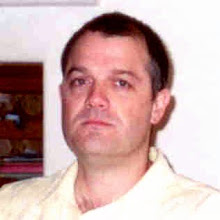The new chief of Greenpeace on his plans to make the organisation more populist, the power of direct action and why he thinks a deal can still be struck at Copenhagen
When Kumi Naidoo, the South African-born human rights activist, was contacted in February by a recruitment company that wanted to know whether he would like to apply to be the next head of Greenpeace, he told them it wasn't a good time to be calling. "I was on the 19th day of a 21-day hunger strike to put pressure on the South African government to change its position on Zimbabwe," he recalls. "I was OK, I was still compos mentis, but I was a little weak and had already lost 14kg. I said, 'Guys, this is not the best time to be thinking about jobs.'"
And there, perhaps, the matter might have rested, had Naidoo not happened to mention it to his 17-year-old daughter, who lives in Glasgow. "She said, 'Dad, I will not speak to you if you don't at least think about it because Greenpeace is one of the best NGOs in the world, and when I grow up I would love to work for them.' It has a kind of magic for young people."
When the company got back in touch a week later, Naidoo showed more enthusiasm and now, on the eve of the Copenhagen climate change conference, he has just started as the organisation's international executive director, responsible for 1,500 staff in 28 offices worldwide and with a budget of €200m, supplied by 3 million individual donors. He makes the point on several occasions that one of Greenpeace's greatest assets is its independence: it takes no money from governments or companies. Those 3 million members are its lifeblood.
I am meeting Naidoo in a prison in Amsterdam, but one that has been converted into a trendy hotel (breakfast, €17.50). It's Sunday morning and he has been in the city, where Greenpeace has its HQ, for only four days. He is staying with friends while flat-hunting, and prefers to meet at this hotel in the converted dock area rather than at Greenpeace's offices in the suburbs because he is still finding his way around.
It is raining when we meet, but he uncomplainingly stands outside for half an hour while the photographer takes pictures. He even takes his anorak off, which seems perverse, to reveal a slightly nautical-looking woolly jumper. Naidoo's unpretentious clothes are at one with the man: relaxed, not trying to impress, innocent. His voice is soft and deep; his manner friendly. The only photograph I have seen of him before we meet was taken at the Gleneagles G8 summit in 2005, where he gave an ill-tempered press conference with Bono and Bob Geldof. In it, he looks fierce, almost dangerous. But the camera can lie. He tells me he and Geldof had just had a blazing row – Naidoo was less sanguine about the results of the summit than the singer-turned-saviour – and they were still both fuming.
Naidoo, 44, is relatively new to environmentalism, so why did Greenpeace choose him? "I think they wanted somebody who was a bridge-builder and an alliance-builder, someone who was mad enough to work 24/7, and someone who was not afraid to take risks." He is the first African executive director, a symbol that the pressure group no longer belongs to the developed world. "There's an issue of justice here: people in developing countries have been least responsible for the climate catastrophe they find themselves in, but they are the ones who are paying the biggest and most brutal price."
He is also the first outsider to head the organisation, and as such is seen as an agent of change. His aims are to give Greenpeace greater global reach, make it more populist and change its focus. The days of discrete campaigns – forests and oceans, tigers and whales – are over; now everything has to be tied together as the war on climate change rages. "Part of our problem historically is that we've operated too much in silos. A measure of specialisation is important, but there's a thin line between specialisation and parochialism."
The first thing he did when he started in Amsterdam was gather together the 150 staff at HQ for a meeting. "I told them I thought the moment we are living in right now can best be described as a perfect storm. First, we had the fuel price crisis three years ago, that led to a food price crisis. We have an ongoing poverty crisis where 50,000 men, women and children die every day from preventable causes. We've known about the climate crisis for some time now; and then the financial crisis was the final boot in the solar plexus. When you have such a convergence of crises, you have two options: you can get out a couple of Band-Aids, try to do a temporary fix and keep it as business as usual; or you can take a leaf out of Chinese culture, where the symbol for crisis is the same symbol for opportunity. I feel that we have to turn this moment into a point where humanity sobers up."
Read more: http://www.guardian.co.uk/environment/2009/nov/30/kumi-naidoo-greenpeace-copenhagenWant to help with Global-Warming? Please visit http://www.whiteearth.org
Please become a fan of the Facebook page http://www.facebook.com/pages/WhiteEarthorg/119367692642 and http://www.facebook.com/pages/WhiteEarth/165767310764
Become a friend on Facebook page http://www.facebook.com/christopherbeau
Follow me on Twitter http://www.twitter.com/christopherbeau


No comments:
Post a Comment